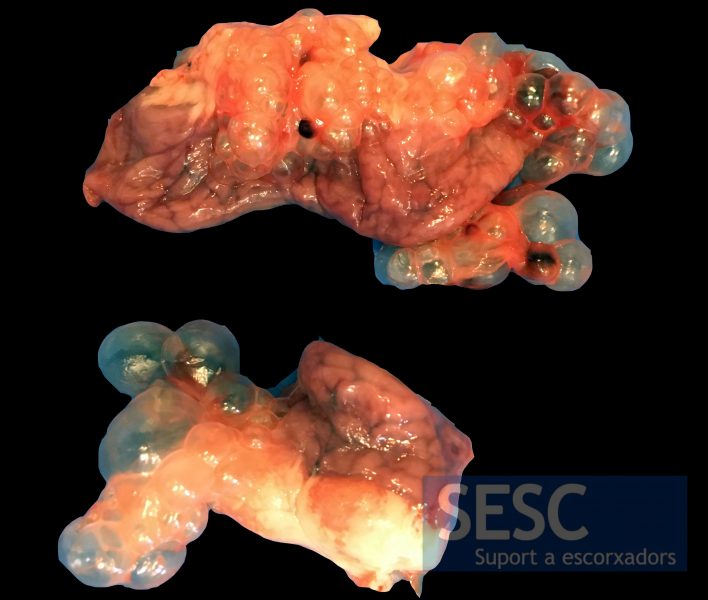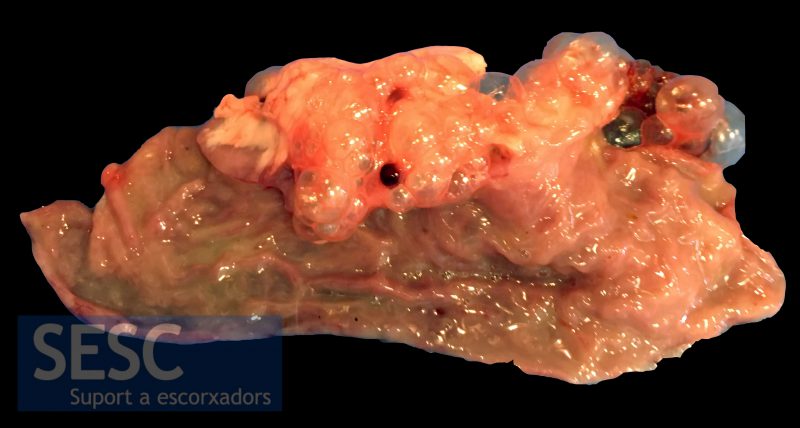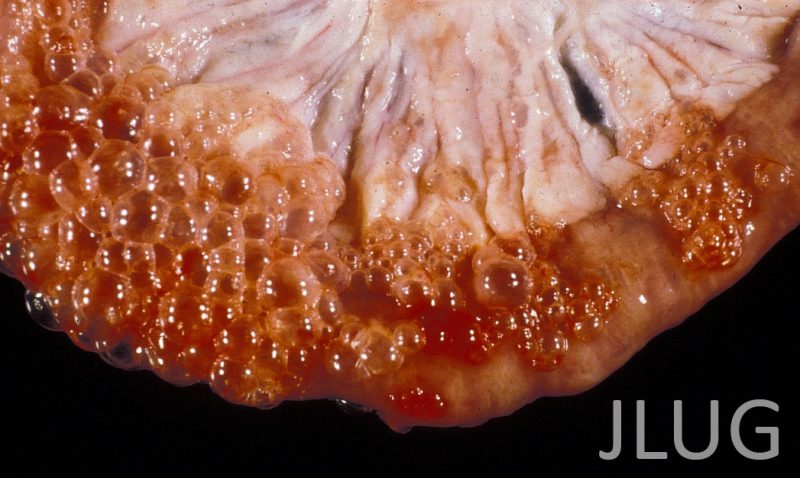Pneumatosis cystoides intestinalis
En una canal de truja de 6 mesos de raça híbrida es van observar múltiples vesícules plenes d’aire al mesenteri de varis fragments de l’intestí prim i dels nòduls limfàtics mesentèrics.
Aquesta lesió es coneix com a emfisema intestinal o Pneumatosis cystoides intestinalis. S'observa poc frequentment, en porcs deslletats i sol ser troballa d'escroxador. Es caracteritza per la presència de vasos limfàtics dilatats a la paret intestinal y al mesenteri degut a la presencia de gas. La causa és desconeguda però no s’associa a signes clínics ni representa cap risc per a la salut pública.

Dos fragments d’intestí prim sense obrir amb múltiples vesícules plenes d’aire adherides al mesenteri.

Un fragment d’intestí obert. La mucosa no presenta alteracions evidents.

Imatge d'arxiu d'un cas típic d'emfisema intestinal


4 comment(s)
Comment from Pork Industry group in LinkedIn by Eduardo J Kwiecien:
I have found few cases at slaughter pigs. It is a very rare condition that one can find at slaughterhouse. Until now, there’s not a causative agent to cause this condition. Some say that Clostridium species can be involved in the pathogenesis of the peumatosis, but there’s not any light about this. Is there anyone with enough courage to investigate the real cause?
Comment from Veterinary pathology group in LinkedIn by LuAnn mckinney:
Also known as “bubbly guts” (graphic, but descriptive…)
http://www.askjpc.org/vspo/show_page.php?id=133
Link to the Systemic Path Case from the Joint Pathology Center.
Comment from Veterinary pathology group in LinkedIn by Dinko Novosel:
Twice, I read one US paper, epi study, number of examen animals was huge…and as i remember lesion is related with trichuris infection…if i remember correct. All animals had trichuris infection background.
Dear All,
After the process of cleaning of the body/carcass, we think because of the too hot water and/or too hot gas-fire, in thin pigs we sometimes have found this condition.
Congratulation and Good luck, Laszlo